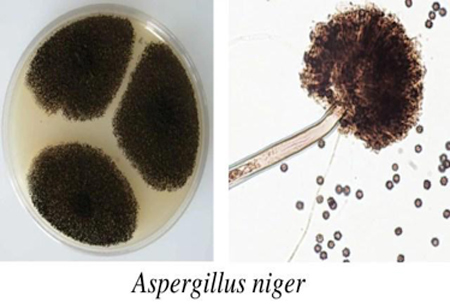By Greg Fredericks ND COPYRIGHT (C) 2023
On September 29, 2022 Israeli scientists at the Weizmann Institute of Science in conjunction with a research team at the University of California, San Diego have announced the discovery of multiple species of fungi contained in various types of cancer tumors. Prof. Ravid Straussman says that detection of fungi is “a new emerging hallmark of cancer”. The study published in the science journal “Cell” suggests this is a never before seen radical new discovery that could change the way cancer is detected in the future.
The recent researchers have systematically profiled fungal communities in more than 17,000 tissue and blood samples taken from patients with 35 types of cancer. The researchers found fungi hiding inside cancer cells or inside lymphocytes found inside tumors.
Their investigations found multiple correlations between the presence of specific fungi in specific tumors such as Malassezia globosa found in breast cancer, a fungus normally found on the skin. The fungus was found to be more prevalent in older patients than younger ones and had a much lower survival rate than patients with breast tumors with no detectible fungus.
Professor Straussman of the Weizmann’s Molecular Cell Biology Department findings that fungal activity in cancer cells is an emerging new hallmark of cancer appears to be oblivious to similar findings have been reported for over 150 years and more recently by Dr. Tulio Simoncini in 2002.
A co-author of the recent Weizmann institute study, Prof. Yitzhak Pilpel, said “the fact that fungi can be found not only in cancer cells but also in immune cells implies that, in the future, we’ll probably find that fungi have some effect not only on the cancer cells but also on immune cells and their activity”.
Rob Knight a professor of Paediatrics, Bioengineering and Computer Science & Engineering at UC San Diego another co-author of the study states that “the existence of fungi in human cancers “is both a surprise and to be expected, it is surprising because we don’t know how fungi could get into tumors throughout the body but it is also expected because it fits the pattern of healthy microbiome throughout the body, including the gut, mouth and skin where bacteria and fungi interact as part of a complex community”.
Straussman and colleagues have reported that lung tumors of smokers contained fungus while non smokers had no fungus. They discovered that melanomas containing bacterial and fungal forms did not respond to immunotherapy while melanomas without pathogens did respond.

The Weizmann institute findings, although incredible, are not the first time a pathogen related connection to cancer has been hypothesized. Most notable early twentieth century microbiologists such as Royal Raymond Rife and Virginia Livingston Wheeler both found a pathogen/ bacterial form related to cancer. Many other scientists however, have reported similar pathogens found in tumors. Some of these include; Dr James Young of Edinburgh, Pathologist John Nuzum from the University of Illinois College of Medicine, and surgeon Michael Scott from Butte Montana, all of whom produced studies of pleomorphic bacterial cyclic forms in cancer in the early 1920’s.
Later in the 1950’s Eleanor Alexander Jackson, Irene Diller, and Florence Seibert published research describing a pathogen related cause of cancer.
The recent Weizmann Institute investigation has also reported that some tumors were found to contain Aspergillus in addition to other bacterial forms”.
Dr. Prof. Gunther Enderlein, a leader in German Biological Medicine throughout the twentieth century reported Aspergillus as one of the fungi associated with degenerative conditions including cancer as early as the 1920’s.
Enderlein went on to formulate isopathic formulations which became “Sanum” remedies. The isopathic remedies are designed to retrograde or revert fungal and bacterial forms into a non pathological disabled state. Sanum remedies are prescribed by practitioners around the world who often use darkfield microscopy to analyse the blood of patients to assess the terrain.
The new study also explores the presence of fungal and bacterial DNA in the blood which has different DNA signatures or “biomarkers” that they believe will be useful in the future detection of cancer. This reminiscent of many past searchers including Gaston Naessens and those previously mentioned. Dr. Ravid Straussman says “These findings should drive us to better explore the potential effects of tumor fungi and to re-examine almost everything we know about cancer through a microbiome lens”
To any conventionally trained scientist educated in Darwinian / Pasteurian biology these finding seem quite revolutionary. Unfortunately for those scientists who have followed the terrain paradigm originally discovered by Antoine Bechamp in the mid nineteenth century, there is no epiphany. The findings of a microbiome related imbalance being conducive to the formation of pathogenic forms and then those forms found in cancer is nothing new. For those scientists who have long known these discoveries we hope they find solace in the fact that orthodox biology and medicine cannot suppress the truth forever.
References: Weizmann Institute of science, Israel, 29 Sept. 2022, https://tinyurl.com/mw3bp6dB
